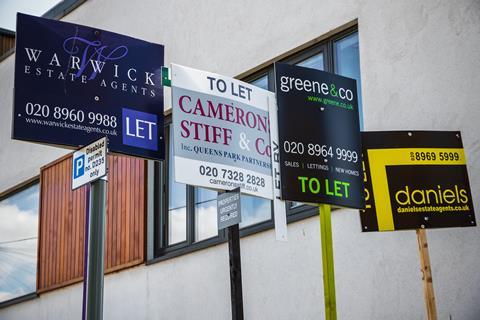Multifamily build-to-rent (BTR) is likely to remain resilient to the Covid-19 outbreak due to its institutionally funded investment character and stable, long-term income profile.

It has embraced the measures rightly introduced by the government to protect residents from eviction during the last quarter.
No doubt, there will be some uncertainty for ‘living’ assets that rely on transient renters, but there is much to be said for the robust operational strategies of professional landlords who are protecting their residents through enhanced mitigation strategies, building sanitisation and ‘service to your door’ benefit.
While BTR is still an emerging asset class in the UK, it is proving itself in the current pandemic as one of the most responsive tenures in terms of community and safety.
As an architect working in BTR across the UK, I am committed to the GLA’s aspirations to provide affordable homes.
But Sadiq Khan’s mayoral campaign is ultimately a “referendum on rent control”, which unsurprisingly has been met with a largely unenthusiastic industry response and prevailing view that rent control will simply not have the desired positive impact.

It is easy to see why rent control is popular among the public and speaks to those needing affordable rental accommodation. In theory, rent caps mean more people can afford to live and work in London and the regional cities.
The GLA, which has genuinely helped establish BTR as a viable alternative to ownership, proposes that controlled rents will attract renters to BTR developments on an unprecedented scale and that that element of consistency should settle investor concerns.
But we need to ask ourselves who rent control is meant to serve: existing tenants or those on the hunt for a home?
The reality is that we are engulfed by a chronic undersupply of new housing. BTR developers compete with housebuilders for land, deal with the same planning challenges and are required to meet the same affordable housing percentiles. We all know the viability challenges that already exist in bringing BTR homes to market.
Political and economic measures need to encourage supply, not restrict it, and rent control will be a deterrent to institutional investors moving into the sector. In San Francisco, where multifamily is established, rent control caused a decrease in the supply of rental housing between 1994 and 2019 and new renters paid an extra $2.9bn in higher rent over that period compared to those already living in rent-controlled properties.
Arguments put forward by the GLA are undoubtedly compelling and rooted in the right sentiment, but rent control will put an extra squeeze on what is an already low-margin, susceptible sector that is crucial to delivering much-needed high-quality homes in properly managed communities.
In my view, affordability issues are best served by increased supply and competition between BTR owner-operators that have shown their adeptness and operational ability to protect their residents through challenges like Covid-19.
We should all welcome this year-long delay to the election as it provides a real opportunity for the industry and GLA to come together to find a solution that serves London’s renters and enhances our ability to deliver much-needed homes.
Jo Cowen is chief executive of Jo Cowen Architects





























1 Readers' comment